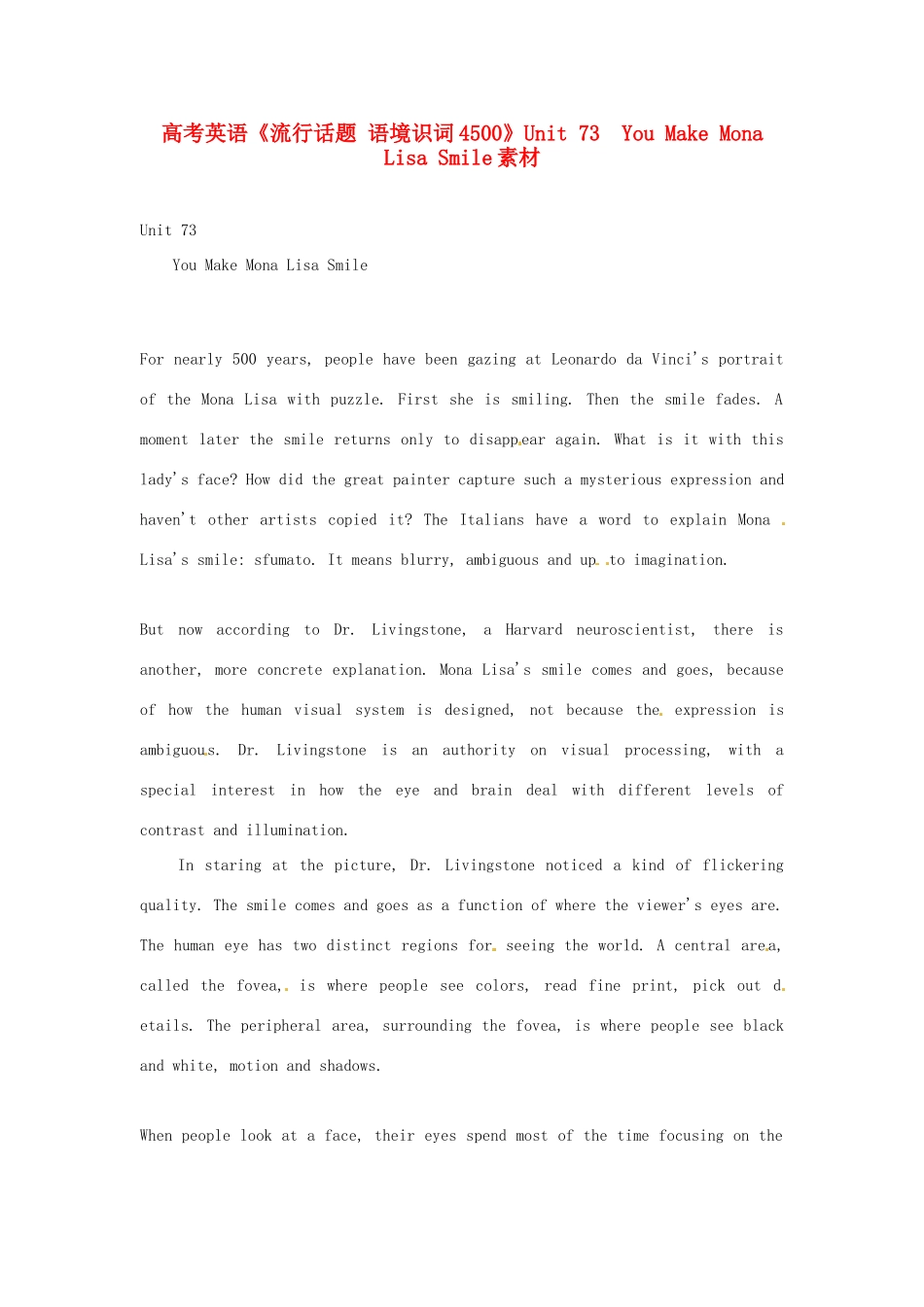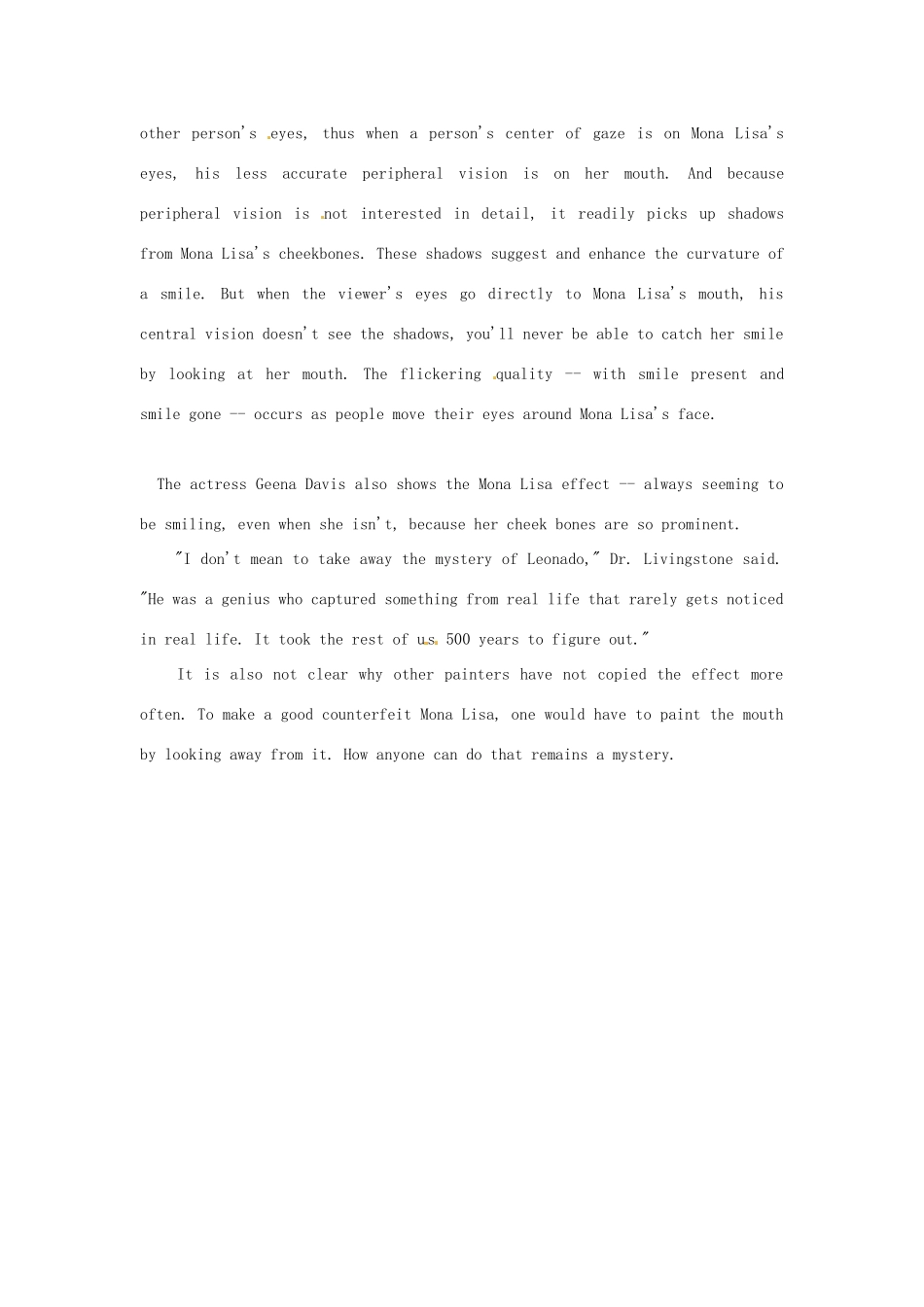高考英语《流行话题 语境识词 4500》Unit 73 You Make Mona Lisa Smile 素材Unit 73 You Make Mona Lisa Smile For nearly 500 years, people have been gazing at Leonardo da Vinci's portrait of the Mona Lisa with puzzle. First she is smiling. Then the smile fades. A moment later the smile returns only to disapp ear again. What is it with this lady's face? How did the great painter capture such a mysterious expression and haven't other artists copied it? The Italians have a word to explain Mona Lisa's smile: sfumato. It means blurry, ambiguous and up to imagination. But now according to Dr. Livingstone, a Harvard neuroscientist, there is another, more concrete explanation. Mona Lisa's smile comes and goes, because of how the human visual system is designed, not because the expression is ambiguous. Dr. Livingstone is an authority on visual processing, with a special interest in how the eye and brain deal with different levels of contrast and illumination. In staring at the picture, Dr. Livingstone noticed a kind of flickering quality. The smile comes and goes as a function of where the viewer's eyes are. The human eye has two distinct regions for seeing the world. A central are a, called the fovea, is where people see colors, read fine print, pick out details. The peripheral area, surrounding the fovea, is where people see black and white, motion and shadows. When people look at a face, their eyes spend most of the time focusing on the other person's eyes, thus when a person's center of gaze is on Mona Lisa's eyes, his less accurate peripheral vision is on her mouth. And because peripheral vision is not interested in detail, it readily picks up shadows from Mona Lisa's cheekbones. These shadows suggest and enhance the curvature of a smile. But when the viewer's eyes go directly to Mona Lisa's mouth, his central vision doesn't see the shadows, you'll never be able to catch her smile by looking at her mouth. The flickering quality -- with smile present and smile gone -- occurs as people move their eyes around Mona Lisa's face. The actress Geena Davis also shows the Mona Lisa effect -- always seeming to be smiling, even when she isn't, because her cheek bones are so prominent. "I don't mean to take away the mystery of Leonado," Dr. Livingstone said. "He was a genius who captured something from real life that rarely gets noticed in real life. It took the rest of us 500 years to figure out." It is also not clear why other painters have not copied the effect more often. To make a good counterfeit Mona Lisa, one would have to paint the mouth by looking away from it. How anyone can do that remains a mystery.

